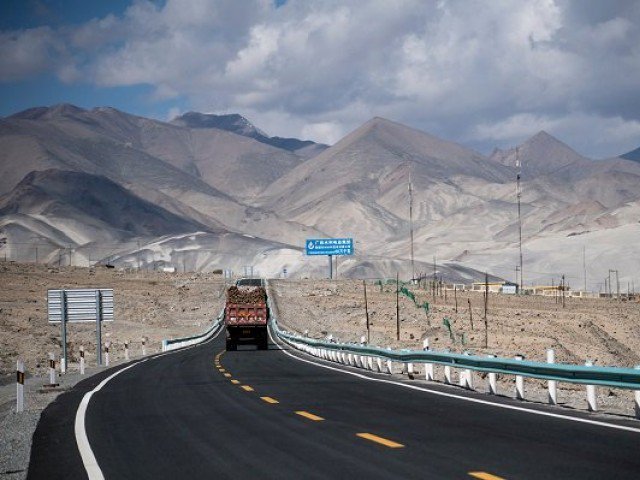The smooth and sustainable development, along with the long-term and multiple benefits generated by the China-Pakistan Economic Corridor (CPEC), the flagship project of the Belt and Road Initiative (BRI), has brushed aside the false narratives of a debt trap pushed forward by some hypocritical, misguided western elements.
On the eve of 10th anniversary of the development process of CPEC, the mega benefits of the projects are clearly making the headlines across national and global media outlets that have been declaring this bilateral initiative as the historic development venture for Pakistan initiated under the signature project of Chinese president Xi Jinping.
Launched in 2013, CPEC, a flagship project of the China-proposed Belt and Road Initiative (BRI), is a corridor linking Pakistan’s southwestern Gwadar port with Kashgar in northwest China’s Xinjiang Uygur Autonomous Region, highlighting energy, transport and industrial cooperation.
CPEC was announced during the visit of the then Chinese Premier Li Keqiang to Pakistan and it received a huge vibrancy during the Chinese president Xi Jinping’s visit to Pakistan in 2015. Since its launch, the project has drawn tremendous outcomes in various sectors of Pakistan.
In the development process, it has been witnessed that CPEC has been modernizing local infrastructure for long-term growth by upgrading development narratives in the country with the support of Chinese investment and aid. CPEC has also been reducing the regional economic development gaps with a view to connect major economic regions and enhancing the trade relations with China to promote exports and developing more government to government and business to business relations
Till now, CPEC as a pilot project of the BRI, has brought a total of 29 billion US dollars in direct investment, 2,00,000 job opportunities, 510 kilometers of expressways, 8,000 megawatts of electricity, 886 kilometers of core transmission grids, fiber optical cable of 820 KM, construction of Gwadar port and Gwadar international airport and vocational training centers injecting strong momentum into Pakistan’s economic and social development, becoming a vivid symbol of China-Pakistan all-weather friendship.
Following these achievements in the first decade of CPEC development throughout its first phase, the so-called debt trap narratives are dying down and the people in Pakistan and China do not believe in such false claims of debts.
Pakistan has negotiated the projects with China under the CPEC framework as per its financial capability of handling the repayments. Both countries are very aware about the importance of their strategic relationship which is vital for development, peace and stability of the region. The negotiated CPEC framework falls under the real vision of Chinese President Xi Jinping describing that all projects carried forward under the BRI reflect mutual and meaningful consultation for producing the win-win results.
The message originating from the BRI shows that China is the second largest economy of the world and will always support its partners that are already exploited by Western powers under the current global economic system.
The Government of Pakistan has many times clarified the situation by commenting on the so-called debt trap claims of western think tanks and media outlets. In this regard, it has been stated that the western media reports regarding CPEC are based on incorrect information, distorted facts and one-sided opinions of individuals.
It is hereby clarified that CPEC is a flagship and most active project of Belt and Road Initiative where 36 projects worth of $ 29 billion have been actualized in the initial 10 years.
CPEC finances are divided in government-to-government loans, investment and grants. Infrastructure sector is being developed through interest-free or government concessional loans. Gwadar Port is grant-based or investment which means the Government of Pakistan does not have to pay back the invested amount for the development of the port. Energy projects are being executed under Independent Power Producers (IPPs) mode and finances are mainly taken by the private companies from China Development Bank and China Exim Bank against their own balance sheets, therefore, any debt would be borne by the Chinese investors instead of any obligation on part of the Pakistani Government.
Pakistan has opted for Chinese investment under CPEC due to the favourable financing arrangements. China stepped forward to support Pakistan’s development at a time when foreign investment had dried up and economic activities were being crippled by energy shortages and infrastructure gaps.
CPEC is not imposing any immediate burden with respect to loans repayment and energy sector outflows. CPEC outflows spread over 20 to 25 years and the resultant benefits of these investments to the Pakistan economy would far outweigh these outflows.
CPEC has provided enormous opportunities for Pakistan to grow economically. It is an engine for economic growth and is expected to increase Pakistan’s GDP growth by 2% to 3%. CPEC has also facilitated in overcoming crucial energy, transport infrastructure and supply chain bottlenecks. Under CPEC, development of Gwadar would ensure strengthening of the maritime sector particularly the coastal tourism and local fishery industry thereby benefiting the local communities. Pakistan has repeatedly stated that it is fully committed to CPEC, which enjoys complete consensus among all institutions and political forces in Pakistan.
It is a key to the future of Pakistan’s socio-economic development. Within the broad parameters of the already approved CPEC framework, the present government, with mutual consultation of the Government of China, is broadening the base and expedite pace of CPEC. A mechanism is being developed to include third party participation in CPEC. Socio-economic development and poverty alleviation are being included in CPEC and a separate working group is being established to fast track this dimension of the mega project. Gwadar continues to be prioritized and being developed as a standalone project and a transshipment hub based on blue economy principles.










